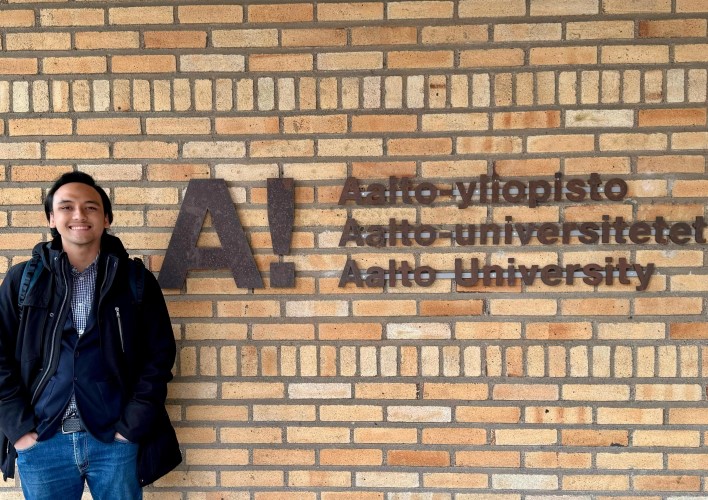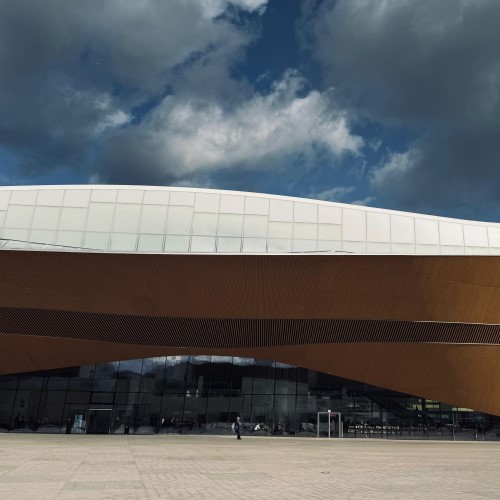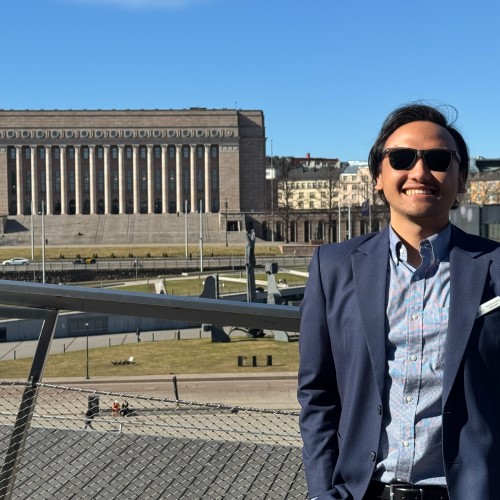My MBA Elective at Aalto University: Studying Innovation and Leadership in Finland
As part of his Full-time MBA journey, Tedo Basundra embarked on an international elective at Aalto University in Finland. His time in Helsinki not only enriched his academic experience but also broadened his professional network and deepened his appreciation for cross-cultural learning. In this blog, Tedo recounts the highlights of his time at Aalto and reflects on why international electives are a valuable and transformative part of the MBA experience.
Reframing Business: Learning to See People Before Problems
I’ve spent most of my professional life thinking in straight lines. In finance and accounting, there’s usually a right answer, a clear formula, a predictable outcome. And for the most part, that way of thinking served me well.
But at some point, I found myself craving something different. I wanted to understand not just how things worked, but why people did what they did. I wanted to get closer to the messier, more human side of business—the side where emotions, behaviours, and hidden needs shape decisions in ways numbers alone can’t explain.
That’s what led me to Aalto University in Helsinki, where I joined the Design Thinking and Service Design as an international elective of my Full-time MBA journey at Warwick Business School (WBS). I went in expecting to pick up a few new tools. What I walked away with was something much deeper.

A different kind of learning
From the very first session, it was clear this wasn’t going to be about neat answers. In fact, we were encouraged not to jump to conclusions at all. Our first task was simply to observe—to really pay attention to how people think, feel, struggle, and adapt in everyday situations.
We didn’t start with assumptions or frameworks. We started with questions. Open ones. Uncomfortable ones. The kind that don’t always have tidy answers.
One of the most powerful moments came when a classmate realised the root of their user’s frustration wasn’t technical at all—it was emotional. That insight completely shifted the direction of their project. It made me realise how often we look for solutions before we truly understand the problem.
Learning through making
Once we felt like we had a better sense of the people we were designing for, we moved into ideation and prototyping. But this wasn’t the kind of building I was used to. There were no polished decks, no weeks of planning. We sketched, we cut paper, we acted out ideas, we built rough models.
It was fast. It was messy. And it was surprisingly freeing.
By creating quick, tangible versions of our ideas, we were able to test them with real people early on. Some things landed. Others didn’t. But every test taught us something new. And that was the point.
One thing that really stayed with me was how creativity often came later in the process, not at the beginning. Our best ideas usually showed up after we thought we had run out. That moment where you’re tired, stuck, and ready to give up? That’s often where the real insight is hiding.
Helsinki’s quiet wisdom
Beyond the classroom, Helsinki itself left an impression on me. There’s a quiet confidence to the city. Nothing shouts. Everything feels intentional. Whether it’s the design of public spaces, the way people interact, or the respect for nature, there’s a calm clarity that seeps into everything.
We visited Oodi, the city’s central library. It’s hard to describe unless you’ve been there. It’s open, warm, and welcoming. It’s not just a place for books—it’s a place for people. You can feel that it was designed with care, not just for function, but for feeling. More than any lecture, that space showed me what good design can do.

A shift in perspective
Looking back, the most important thing I learned wasn’t a technique or a method. It was a mindset.
Design thinking taught me to stay curious longer. To ask better questions. To listen without needing to fix. To build with people, not just for them. And maybe most importantly, to be okay with not knowing the answer right away.
It’s changed how I approach problems. I now spend more time understanding people before thinking about strategy. I notice things I used to overlook. I ask different kinds of questions. And I’m more comfortable sitting with uncertainty.
Aalto, thank you
What I found at Aalto was more than a course. It was a pause. A reset. A space to think differently, surrounded by people who cared deeply about designing things that matter.
If you’re searching for something more human in the way you work, lead, or create—something that reconnects business with empathy—I honestly can’t think of a better place to start.
Because sometimes, the most powerful thing you can do is to stop, observe, and simply ask, “What does this feel like for someone else?”
And then build from there.





 X
X Facebook
Facebook LinkedIn
LinkedIn YouTube
YouTube Instagram
Instagram Tiktok
Tiktok